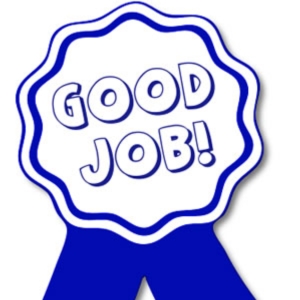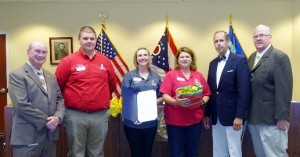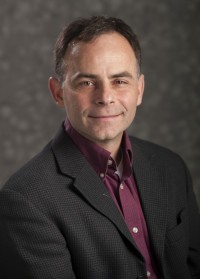Research says 80% of organizations think rewarding employees is important. However, the number one difficulty in doing so comes down to money. And not in the way you might think. More challenging than the seemingly short supply of financial resources to compensate employees is actually assigning a price or value to an employee’s work or production. In short, it is a real struggle to quantify in dollars a compensation that truly represents actual employee value.
When it comes to rewarding performance, there are three key factors: money, priority, and culture.
- Money… as we all know, it can be quickly spent and any short-term motivating effects forgotten.
- Other rewards or incentives… whether an organization is working with volunteers or paid employees, these are typically low organizational priorities.
- Culture… many organizations believe that people are simply expected to do their jobs and do them well.
A performance reward system that leads to strife and division is not a good system. What are the best practices for incentivizing and rewarding employees and volunteers? According to the research, use of non-monetary incentives has lasting power and the highest impact. Consider, for example, the non-monetary tangible variety (such as gift cards) or the non-monetary intangible variety (such as volunteer of the month with a special parking spot by the door).
Where might you start? One of the first things you can do is identify what sorts of behaviors, practices and performance you want to reinforce. Then, focus on learning what motivates people in your organization. Maybe collaborating with others on a project or achieving a lofty goal are the behaviors you want to reinforce. Or perhaps, you want to encourage long-term volunteer service? Each of these are recognized and celebrated in different ways. Whatever method is ultimately chosen, consistency and fairness are the keys to a successful and results-driven reward.
How can you get creative in reinforcing the most desirable behaviors and performance in your organization?
For further reading: Systematic Inventive Thinking, April 2013. How Companies Incentivize Innovation
Cindy Bond is an Assistant Professor and County Extension Educator (Guernsey County & Crossroads EERA).

 After a very engaging and successful Ohio Local Foods week in August, there was a variety of interest expressed in pursuing a center for small business owners to collaborate within Clermont County. As envisioned, this center would incorporate an incubator kitchen for cottage foods producers and other locally sourced value-added products to supply a wide variety of market sectors within the agriculture industry of Clermont County. A preliminary working group has been established to facilitate the process. Over the coming weeks the group will research facilities and design after which a larger group of producers and supporters will be convened to expand upon the foundation work and decide on the next steps in this venture.
After a very engaging and successful Ohio Local Foods week in August, there was a variety of interest expressed in pursuing a center for small business owners to collaborate within Clermont County. As envisioned, this center would incorporate an incubator kitchen for cottage foods producers and other locally sourced value-added products to supply a wide variety of market sectors within the agriculture industry of Clermont County. A preliminary working group has been established to facilitate the process. Over the coming weeks the group will research facilities and design after which a larger group of producers and supporters will be convened to expand upon the foundation work and decide on the next steps in this venture. Leadership! It is a basic fundamental need for any organization to perform as a well-balanced machine. We have learned from an earlier developed plan of work that addressing the needs of county elected officials is a necessity. Many of the public officials I met with during the first few months in my position confirmed this need. They have asked for education in leadership development, conducting effective meetings, communicating more effectively, and other key areas. Based upon these conversations, the
Leadership! It is a basic fundamental need for any organization to perform as a well-balanced machine. We have learned from an earlier developed plan of work that addressing the needs of county elected officials is a necessity. Many of the public officials I met with during the first few months in my position confirmed this need. They have asked for education in leadership development, conducting effective meetings, communicating more effectively, and other key areas. Based upon these conversations, the  Through early discussions with townships and villages, many officials and community members have expressed an interest in strategic planning and goal setting for their communities. This has added to the growing excitement of expansion and redevelopment of infrastructure throughout Clermont County, and community-based projects of this nature are currently being planned.
Through early discussions with townships and villages, many officials and community members have expressed an interest in strategic planning and goal setting for their communities. This has added to the growing excitement of expansion and redevelopment of infrastructure throughout Clermont County, and community-based projects of this nature are currently being planned.
 Countless scholars, experts and ordinary folks throughout history have touted the importance of building and maintaining trust. Noted educator and author, the late Dr. Stephen R. Covey, often wrote about its importance to relationship building. “Trust is the glue of life. It’s the most essential ingredient in effective communication. It’s the foundational principle that holds all relationships.” Covey continues, “When the trust account is high, communication is easy, instant, and effective.” When individuals trust each other, they have empathy for one another, forgive easily, and give each other the benefit of the doubt.
Countless scholars, experts and ordinary folks throughout history have touted the importance of building and maintaining trust. Noted educator and author, the late Dr. Stephen R. Covey, often wrote about its importance to relationship building. “Trust is the glue of life. It’s the most essential ingredient in effective communication. It’s the foundational principle that holds all relationships.” Covey continues, “When the trust account is high, communication is easy, instant, and effective.” When individuals trust each other, they have empathy for one another, forgive easily, and give each other the benefit of the doubt. As of May 1, I assumed the role of
As of May 1, I assumed the role of An effective execution plan starts with committing to a series of 15-minute segments on planning and implementing the strategic plan. Franklin Covey’s
An effective execution plan starts with committing to a series of 15-minute segments on planning and implementing the strategic plan. Franklin Covey’s  What did the coach do for each of us?
What did the coach do for each of us? Obviously some of our social inventions for working together, resolving conflict, sharing resources and living together have not worked so well. We still settle some of our differences through violence, and there is still racism, prejudice and greed. There are far too many people who live in poverty, lack adequate food, water, education and medical care. However, looking at the facts we can see a decline in all these categories. In the area of hunger we now produce enough food to feed everyone in the world but not everyone has enough food, so we need to invent a new worldwide food distribution system. What we forget is that we invented the current worldwide food system and that
Obviously some of our social inventions for working together, resolving conflict, sharing resources and living together have not worked so well. We still settle some of our differences through violence, and there is still racism, prejudice and greed. There are far too many people who live in poverty, lack adequate food, water, education and medical care. However, looking at the facts we can see a decline in all these categories. In the area of hunger we now produce enough food to feed everyone in the world but not everyone has enough food, so we need to invent a new worldwide food distribution system. What we forget is that we invented the current worldwide food system and that 
 Let’s leave this place better than we found it. I realized that those nine words communicated many of the ideals that I hope to instill in my daughter: respect, service and commitment to something larger than self. Imagine if each of us began every day with that goal in mind. At work, at school, in our communities, our homes, within our groups and families, if we each made the promise, in any way large or small, to leave this place better than we found it.
Let’s leave this place better than we found it. I realized that those nine words communicated many of the ideals that I hope to instill in my daughter: respect, service and commitment to something larger than self. Imagine if each of us began every day with that goal in mind. At work, at school, in our communities, our homes, within our groups and families, if we each made the promise, in any way large or small, to leave this place better than we found it.